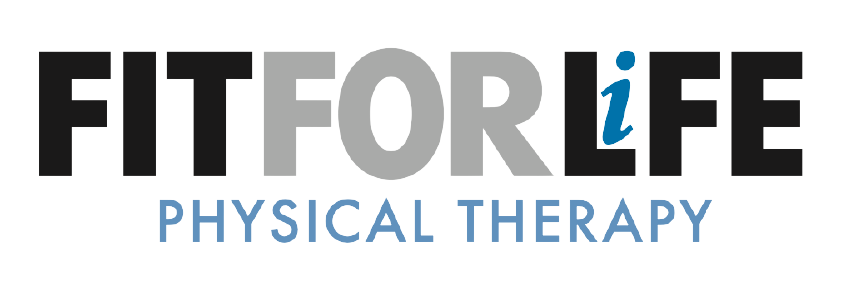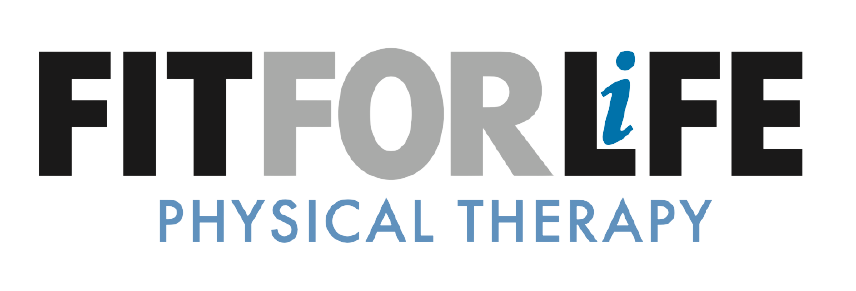Strength Training for Runners & Walkers
Chelsea Hall PT, DPT
Fit For Life Physical Therapy
If you’re like most MIT runners and walkers, you’d rather spend two hours running hills in the summer heat than spend 20 minutes in a gym. Running and walking is what we love, after all! However, research by Richard Blagrove highlights a compelling reason to embrace strength training: incorporating just 2-3 strength sessions per week can improve running economy, race times, and sprint speed.
Adding strength training to your routine is a powerful way to enhance performance without increasing mileage or intensity. Strengthening can also help prevent injuries and overtraining. With so many exercises to choose from, it can be overwhelming to know where to start. Free weights (dumbbells, kettlebells) are preferable to machines because they engage stabilizing muscles crucial for upright running and walking. Keep it simple by focusing on these key movement patterns:
Squats: Squats strengthen the legs, glutes, and core, and are key for building endurance and power.
Variations to try:
Goblet Squats: Holding a dumbbell or kettlebell at chest height.
Rear Foot Elevated Split Squats: Elevating the back leg to challenge balance and targeting quads and glutes.
Single-Leg Squats (Pistol Squats): Great for unilateral strength and stability.
Jump Squats: Explosive movement that enhances power and agility.
Hip Hinge Movements: These exercises target the posterior chain, which is crucial for running form and injury prevention:
Romanian Deadlifts (RDLs): Focus on hinging at the hips while keeping a slight bend in the knees.
Kettlebell Swings: A dynamic movement that builds hip strength and explosive power.
Hip Thrusts: Target the glutes and hamstrings by raising the hips off the ground.
Single-Leg Deadlifts: Improve balance and stability while working the hamstrings and glutes.
Step-Ups: Step-ups improve coordination and strength in a running-specific motion:
Weighted Step-Ups: Hold dumbbells or kettlebells to increase intensity.
Lateral Step-Ups: Step sideways to engage the glutes and hip abductors.
Box Jumps or Jump Step-Ups: Explosive variations to build power and agility.
Step-Downs: Control the movement as you lower back down, which targets eccentric strength.
Lunges: Lunges help with single-leg strength, balance, and coordination:
Walking Lunges: Adds motion to the lunge, engaging the glutes, hamstrings, and quads.
Reverse Lunges: Easier on the knees and great for focusing on posterior chain strength.
Lateral Lunges: Step to the side to engage your inner thighs, quads, and glutes.
Curtsy Lunges: Target the glutes and quads while also engaging hip stabilizers.
Jump Lunges: Add explosive movement for power and agility.
Lunge with Twist: Add a torso twist to engage your core and challenge your balance.
Calf Raises: The calf muscles generate 50-60% of the force in running, making them essential to strengthen:
Single-Leg Calf Raises: Focus on one leg at a time for a greater challenge.
Eccentric Calf Raises: Lower slowly to build strength and prevent injury.
Seated Calf Raises: Target the soleus muscle (lower calf) with bent knees.
Standing Calf Raises on a Step: Allow for a greater range of motion to stretch and strengthen the calves.
Jump Rope: A dynamic exercise that not only strengthens the calves but also improves agility and cardiovascular fitness.
Upper Body Strength: While you don’t need bulging biceps to run a marathon, neglecting upper body strength can increase injury risk and impact daily life activities. Key exercises include:
Push-Ups: Classic and effective for building chest, shoulder, and core strength.
Rows: Dumbbell or barbell rows target the upper back, improving posture and helping you maintain a strong running form.
TRX Rows: A bodyweight variation that focuses on upper back and biceps.
Overhead Press: Strengthens shoulders and arms, contributing to arm drive during running.
Chest Press: Dumbbells or barbell variations work the chest and triceps.
Core strength: Core strength is essential for runners because it improves stability, posture, and efficiency while reducing injury risk. A strong core helps maintain proper running form, especially as fatigue sets in.
Here are some great core exercises for runners:
Plank– Builds endurance and stability in the entire core.
Dead Bug – Engages deep core muscles and promotes coordination.
Bird Dog – Enhances balance and core control, reducing excessive movement while running.
Pallof Press – Anti-rotation exercise that improves core stability and control.
Side Plank with Leg Lift – Strengthens the core and glutes while improving lateral stability.
How Heavy Should You Lift?
Strength training should challenge the body differently than running. Lighter weights with high repetitions mimic endurance work, but for maximum benefit, aim for heavier weights with lower reps. A good starting point is 3 sets of 8 reps, using a weight that feels like a 7-8/10 effort by the final reps. If you’re new to strength training, begin with 10-12 reps per set and prioritize form before increasing weight.
How Often Should You Strength Train?
Research supports 2-3 sessions per week for the best results. If that feels overwhelming, start with one session and gradually increase as it becomes manageable. Offseason training is a great time to increase strength volume, while during peak racing periods, scaling back to 1-2 sessions per week allows for adequate recovery.
To optimize your schedule, align strength training with harder run days (e.g., tempo or interval workouts) so that your recovery days remain truly easy.
Structuring Workouts:
Here’s how to structure strength workouts for base building and race prep, while also adjusting for time availability.
Base Building Phase (Off-Season or early training cycle)
Goal: Build general strength, improve muscle imbalances, and prevent injury
Format: 2–3x per week, moderate weights, 3 sets of 8–12 reps per exercise
Full-Body Strength Workout (45–60 min, 2–3x per week)
1. Squat Variation – Goblet Squats or Rear Foot Elevated Split Squats
2. Hip Hinge Variation – Romanian Deadlifts or Hip Thrusts
3. Step-Ups – Weighted Step-Ups for unilateral strength
4. Lunge Variation – Lateral or Reverse Lunges
5. Calf Strength – Eccentric Calf Raises or Seated Calf Raises
6. Upper Body Strength – Rows (Dumbbell or TRX) + Overhead Press
7. Core Stability – Pallof Press, Dead Bug, Side Plank with Leg Lift
Shorter Workout (30 min, 2x per week)
1. Goblet Squats – 3x10
2. Romanian Deadlifts – 3x8
3. Weighted Step-Ups – 3x10 per leg
4. Eccentric Calf Raises – 2x12
5. Core Circuit: Plank (30 sec), Bird Dog (10 reps per side), Pallof Press (10 reps per side)
Race Prep Phase (6–8 weeks before race day)
Goal: Maintain strength while focusing on power, efficiency, and stability
Format: 1–2x per week, lower reps with moderate weights, incorporating plyometrics
Power & Stability Workout (45 min, 1–2x per week)
1. Jump Squats – 3x6 (explosive)
2. Single-Leg Deadlifts – 3x8 per leg
3. Box Jumps or Jump Step-Ups – 3x6
4. Curtsy Lunges – 3x8 per leg
5. Single-Leg Calf Raises – 3x12 per side
6. Upper Body: Push-Ups or Rows – 3x10
7. Core Circuit: Side Plank with Leg Lift (30 sec per side), Pallof Press (10 reps per side)
Quick Maintenance Workout (20–30 min, 1x per week)
1. Rear Foot Elevated Split Squats – 3x8 per leg
2. Romanian Deadlifts – 3x8
3. Jump Step-Ups – 2x6 per side
4. Calf Strength: Eccentric Calf Raises – 2x10
5. Core Finisher: Dead Bug, Side Plank with Leg Lift
Making Strength Training More Engaging
If gym sessions feel like a chore, mix things up. Take your dumbbells outside when the weather is nice, structure your exercises into a circuit for variety, or train with a friend for accountability.
Final Thoughts
Strength training is a valuable tool for improving running and walking performance and reducing injury risk. If you’re new to it or unsure about your form, consult a coach or medical professional to ensure you’re lifting safely. If you have any questions, feel free to call Fit For Life Physical Therapy at (614) 981-1979 or email us at Info@FitForLifePhysicalTherapy.com—and keep moving!
References:
Blagrove, R.C., Howatson, G. & Hayes, P.R. Effects of Strength Training on the Physiological Determinants of Middle- and Long-Distance Running Performance: A Systematic Review. Sports Med 48, 1117–1149 (2018). https://doi.org/10.1007/s40279-017-0835-7
Please visit our website https://www.fitforlifephysicaltherapy.com/, email us at info@fitforlifephysicaltherapy.com, or call or text us at any of the phone numbers for our three convenient locations inside Fleet Feet stores:
Polaris: 1270 East Powell Road Lewis Center, Ohio 43035 ~ 614-981-2065
Upper Arlington: 1344 West Lane Avenue, Columbus, Ohio 43221 ~ 614-981-1979
New Albany: 5792 North Hamilton Road, Columbus, Ohio 43230 ~ 614-581-7441

